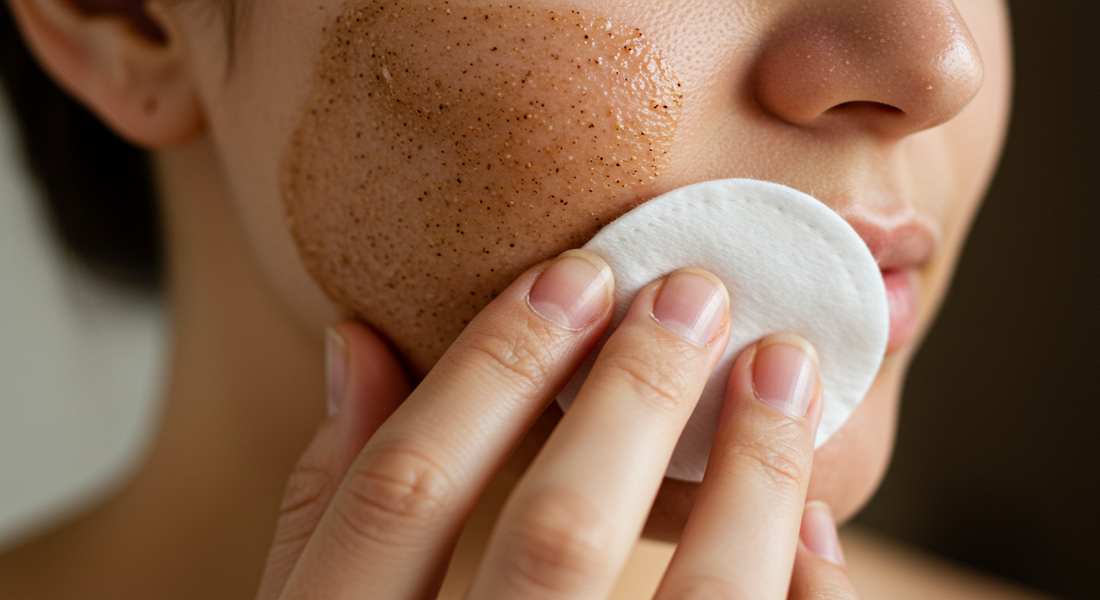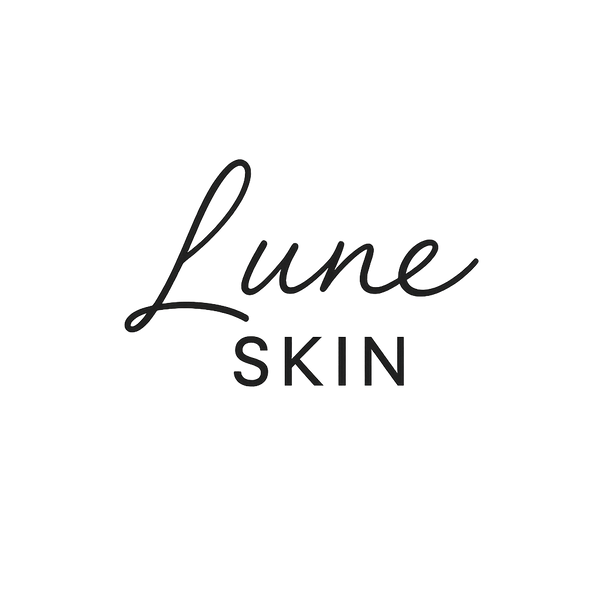
Chemical vs. Physical Exfoliants: Which One Does Your Skin Need?
Share
Exfoliation is one of the most transformative steps in skincare — revealing brighter, smoother skin by removing dead cells that accumulate on the surface. But if done incorrectly, it can also cause irritation, dryness, and even breakouts. That’s why understanding the difference between chemical and physical exfoliants is essential.
At Lune Skin, we often get questions like: “Should I use a scrub or an acid toner?” or “Is chemical exfoliation too harsh?” The truth is, both types have their place in a skincare routine — when chosen and applied wisely.
This guide breaks down what each exfoliant does, how they work, and how to pick the best one for your unique skin type.
Why Exfoliation Matters
Your skin naturally sheds dead cells every 28–40 days, but this process slows down with age, environmental stress, and poor hydration. The result?
- Dull, rough texture
- Clogged pores and breakouts
- Uneven tone and pigmentation
- Decreased product absorption
Exfoliation helps accelerate this renewal process, bringing fresher, healthier skin to the surface. But how you exfoliate makes all the difference.
What Are Physical Exfoliants?
Physical exfoliants (also called mechanical exfoliants) use small particles or tools to manually scrub away dead skin. These include:
- Facial scrubs with microbeads, rice powder, or walnut shell
- Exfoliating brushes or cloths
- Silicone cleansing tools
- Polishing masks with granules
Pros:
- Instant smoothing effect
- Easy to use and feel results immediately
- No need for “activation” time — rinse and done
Cons:
- Risk of microtears if too abrasive (especially with harsh particles like apricot or walnut)
- May over-exfoliate sensitive or acne-prone skin
- Uneven exfoliation depending on pressure and technique
Best for: Normal, oily, or combination skin types with no active irritation. Occasional use (1–2 times/week) is ideal.
At Lune Skin, we recommend ultra-fine particle scrubs or polishing powders that minimize friction while still offering effective resurfacing.
What Are Chemical Exfoliants?
Chemical exfoliants dissolve the bonds between dead skin cells using mild acids or enzymes. Rather than scrubbing, they work on a cellular level.
The most common types include:
-
AHAs (Alpha Hydroxy Acids): glycolic, lactic, mandelic acids
-
Water-soluble and ideal for surface exfoliation
-
Great for dry, dull, or sun-damaged skin
-
-
BHAs (Beta Hydroxy Acids): salicylic acid
-
Oil-soluble, penetrates pores to remove buildup
-
Excellent for acne-prone and oily skin
-
-
PHAs (Polyhydroxy Acids): gluconolactone, lactobionic acid
-
Larger molecules, gentler than AHAs
-
Suitable for sensitive skin
-
-
Enzymes: derived from papaya (papain), pineapple (bromelain), or pumpkin
-
Break down proteins on skin’s surface
-
Gentle option for delicate complexions
-
Pros:
- Even exfoliation without scrubbing
- Can target specific concerns (acne, pigmentation, fine lines)
- Many types available for different skin needs
- Encourages collagen production and cell turnover over time
Cons:
- May cause stinging or purging initially
- Sun sensitivity if overused
- Requires careful layering if combined with other actives
Best for: Most skin types, including sensitive, aging, or acne-prone — as long as formulation and concentration are appropriate.
At Lune Skin, we formulate with balanced blends of AHAs and PHAs to offer exfoliation that is both effective and barrier-friendly.
Key Differences at a Glance
| Category | Physical Exfoliants | Chemical Exfoliants |
|---|---|---|
| Method | Manual scrubbing | Acid or enzyme-based dissolution |
| Texture | Grainy or tool-based | Liquid, gel, or toner |
| Instant Effect | Yes | Sometimes gradual |
| Risk | Microtears, irritation | Sensitivity, sun reaction |
| Best For | Normal to oily, non-sensitive | Most types (with customization) |
| Frequency | 1–2 times/week | 2–4 times/week, depending on strength |
How to Choose the Right Exfoliant for Your Skin
1. Sensitive or Rosacea-Prone Skin
Go for: PHAs, enzyme exfoliants, or low-strength lactic acid
Avoid: Harsh scrubs or brushes
2. Oily, Congested, or Acne-Prone Skin
Go for: Salicylic acid (BHA), glycolic acid, gentle physical scrubs with smooth beads
Avoid: Over-exfoliating — this can increase oil production and sensitivity
3. Dry or Aging Skin
Go for: Lactic acid, mandelic acid, or fruit enzyme masks
Avoid: Rough mechanical exfoliants that can disrupt skin barrier
4. Combination Skin
Go for: Alternating between mild physical and chemical exfoliants
Avoid: Using both on the same day without building tolerance
Can You Combine Both?
Yes — when done strategically. Many people use physical exfoliation occasionally and chemical exfoliation regularly, depending on skin condition.
For example:
- Monday: Use a gentle AHA toner at night
- Friday: Apply a light scrub in the morning for glow
- Avoid: Layering a scrub and acid on the same day unless your skin is highly tolerant
Always follow exfoliation with hydration and sun protection.
Common Exfoliation Mistakes to Avoid
- Using rough scrubs on active breakouts
- Exfoliating too often (every day is usually too much)
- Skipping sunscreen afterward (increased sun sensitivity)
- Not adjusting based on weather or skin condition
- Layering strong actives without a break (e.g., retinol + glycolic acid)
Exfoliation should feel like refinement, not punishment. At Lune Skin, we advocate “respectful exfoliation” — working with your skin, not against it.
Final Thoughts: Smooth Skin Starts with Smart Exfoliation
Exfoliation doesn’t need to be complicated, but it does need to be thoughtful. Whether you prefer the instant polish of a physical scrub or the cell-deep action of chemical acids, choosing the right method depends on your skin’s needs, lifestyle, and goals.
Both types can be incredibly effective — or damaging — depending on how they’re used. By understanding their mechanisms, risks, and benefits, you can exfoliate with confidence and consistency.
Lune Skin supports a balanced approach: gentle, science-backed exfoliants that prioritize long-term skin health over aggressive resurfacing.
